#mexican catrina
Explore tagged Tumblr posts
Text

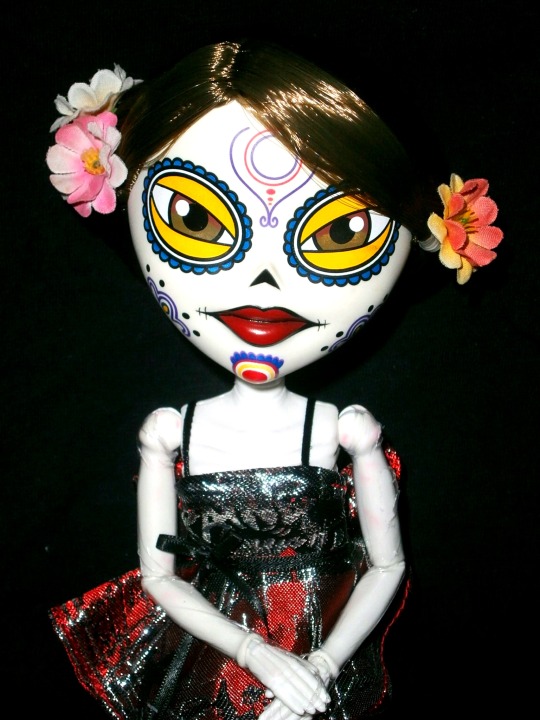







Mariko looks so good with Jett Dawson's dress. I've had this doll since January 2021, and I've completely ignored her since then, but seeing her with this dress makes me appreciate her so much more. 🌺💀🌹
#catrina#catrinas#catrinas underworld#mexican catrina#día de muertos#rainbow high#jett dawson#monster high#skelita calaveras#skelita
17 notes
·
View notes
Text


Día de muertos 2024
141 notes
·
View notes
Text
Rosalina la Catrina

¡Espero que hayan tenido un buen 2 de Noviembre!
#nintendo#princess rosalina#super mario#nintendo fanart#the book of life#la muerte#catrina#dia de los muertos#2 de noviembre#day of the dead#rosalina#mexican artist
40 notes
·
View notes
Text

Happy Dia de los Muertos to la Calavera Catrina!
🇲🇽💀🎀
#history#dia de los muertos#day of the dead#la calavera catrina#josé guadalupe posada#mexican history#diego rivera#dreams of a sunday afternoon in alameda park#1910s#illustration#art history#latin america#historical figures#mexico#coquette#latina#art#embrace your roots#womens history#newspaper#historical art#mexican culture#be who you are#nickys facts
20 notes
·
View notes
Text

FELIZ DIA DE MUERTOS! 💀🏵️🕯️
Its still day of the dead here ,so here you have my annual panchito drawing celebrating this day hehe
#panchito pistoles#the three caballeros#los tres caballeros#mexico#dia de muertos#dia de los muertos#make up#disney#the three caballeros fanart#panchito pistoles fanart#mexican tradition#my art#my artwork#catrina make up#art doddle#panchito romero miguel junipero francisco quintero gonzalez
118 notes
·
View notes
Text


This movie changed my brain chemistry in ways I can’t even describe
17 notes
·
View notes
Text
instagram
#fashion#beauty#makeup#reelsinstagram#mexican culture#día de los muertos#halloween#catrina#calaveras#sugar skull#Instagram
10 notes
·
View notes
Text
"Nowhere" by Aguascalientes, Mexico-based deathrock group Sex Catrina off of their 2022 EP Stage Flesh 2
#death rock#gbeat#no wave#post punk#S(e)x Catrina#Nowhere#Stage Flesh 2#censoring because Tumblr is wacky#music#Mexican#2022#Mexican deathrock#Bandcamp#Aguascalientes Mexico
7 notes
·
View notes
Text

No se que tienen las flores Llorona
Las flores de un camposanto
Que cuando las mueve le vienteo Llorona, parece que estan llorando....
(i don't know what the flowers have Llorona.
The flowers of the graveyard.
That when the wind moves them Llorona, looks like they are crying)
Finally my dia de muertos for this year
Dia de muertos is our most important tradition
It comes from pre Hispanic times, even if now its a mix of the many cultures in Mexico
The nights of 31 of October and 1 of November, our deads come back from the underworld and we offer them food and water and all the things they enjoyed in life.
We welcome them back even if its only for one night.
I hope you like ❤️
We Mexicans are happy to share our culture ❤️
#dia de los muertos#dia de muertos#catrina#la llorona#Llorona#mexico#Tradicion#tradiciones#tradición#muerte#Muertos#Dia de muertos mexico#Tradition mexicana#mexicana#mexican#maquillaje#calavera#day of the dead#folklore#makeup
31 notes
·
View notes
Text
Traveling in festival seasons (Fall edition) 🍁🍂
Dia de Los Muertos
Every autumn, Mexico erupts with joyful celebrations to honor lost loved ones during the time-honored holiday of Día de los Muertos. Far from somber, the festivities invite the deceased to return through vibrant rituals passed down through generations. You'll see the streets come alive with parades of skeletons and skulls, elaborate altars overflowing with marigolds and favorite foods of those departed, and families gathering in cemeteries for overnight vigils. The playful costumes and faces painted like sugar skulls celebrate life and death alike. To fully experience the communal rituals, rich memories, and cultural insights that surround Día de los Muertos, you must immerse yourself in the celebrations. As you reflect on mortality and honor those who came before, you just may leave Mexico with a revived passion for squeezing every drop out of life. Let the uplifting festivities of Día de los Muertos sweep you up on a travel adventure like no other this fall.

Before going Mexico for Día de los Muertos you need to understand their culture and traditions and where are they coming from.
Día de los Muertos, or Day of the Dead, is a multi-day holiday celebrated each year from October 31 to November 2 across Mexico and by people of Mexican heritage worldwide. The holiday originated with the indigenous Aztec and Mesoamerican cultures of Mexico and Central America over 3,000 years ago. When Spanish conquistadors arrived in the region in the 1500s, the rituals of Día de los Muertos merged with the Catholic holidays for All Saints and All Souls Days.
Today, Día de los Muertos is a time for families to honor and celebrate their deceased loved ones. They build elaborate altars called ofrendas overflowing with the favored foods, drinks, photos and possessions of the dead. The holiday is associated with vibrant decorations like marigold flowers and sugar skulls. Families often clean and decorate the graves of lost loved ones, sometimes having overnight candlelight vigils or picnics in the graveyard. Parades and festivals with skeleton costumes, music, dancing and feasts are common public celebrations.
While Día de los Muertos has origins in mourning and remembrance, the mood today is celebratory and festive. The rituals are designed to entice the spirits of deceased family members to return for this special day of reunion. The holiday reminds us to value life and those we love. Día de los Muertos reflects the Mexican view that death is natural - not something to fear, but rather accept as part of life's cycle.

Participating in Dia de los Muertos festival is an incredible opportunity to immerse yourself in Mexican culture and honor the tradition of celebrating life and remembering the departed. Here are some recommendations for what to do during the festival:
Visit Altars: These are set up in homes, cemeteries, or public spaces, overflowing with marigolds, candles, skulls, photos, and the favorite foods and belongings of deceased loved ones. Observing them provides deep insight into the customs. Each altar is unique and offers a glimpse into the lives of those being remembered. Respectfully observe the offerings and take in the stories behind them.

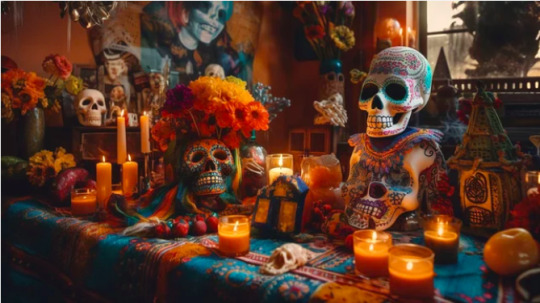
Attend a candlelight vigil - Many families hold all-night vigils in cemeteries, decorating graves with marigolds and keeping candles lit to guide the spirits. Witnessing this intimate tradition is moving- Many families hold all-night vigils in cemeteries, decorating graves with marigolds and keeping candles lit to guide the spirits. Witnessing this intimate tradition is moving
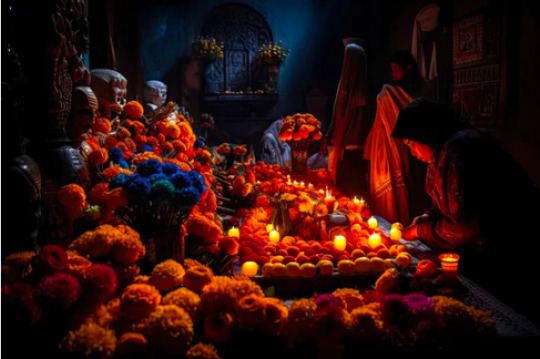
Witness Parades and Processions: Many towns and cities host lively parades filled with vibrant costumes, music, dancing, and people painted as calaveras (skulls). These parades are a joyful way to celebrate the spirits' return.

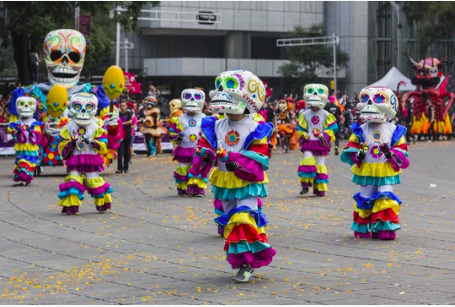


Enjoy Traditional Foods: Indulge in the delicious traditional foods associated with Dia de los Muertos, such as pan de muerto (sweet bread), chocolate caliente, sugar skulls, tamales, atole (a warm beverage), and more.

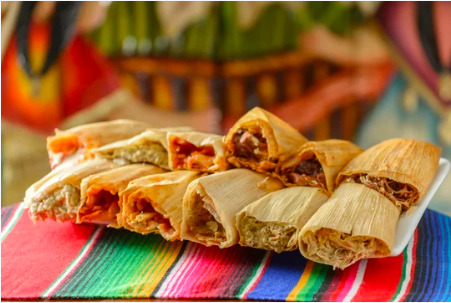

Learn about La Catrina: Discover the history and significance of La Catrina, the iconic elegantly dressed skeleton figure.
La Catrina became an iconic Día de los Muertos symbol due to her origins in José Guadalupe Posada's satirical 1910 etching of an elegant female skeleton, poking fun at indigenous Mexicans imitating upper class fashions. Her name blended European and native words, while her outfit blended styles, representing Mexico's mixed origins. Artist Diego Rivera later popularized La Catrina as a national symbol in his murals. Her playful yet philosophical representation of death as a natural part of life, instead of something to fear, resonated deeply. Today La Catrina appears everywhere during Day of the Dead celebrations, from artwork to costumes. She is the quintessential folkloric embodiment of Mexican identity and attitudes towards death.
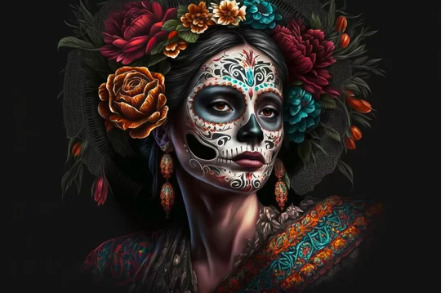

Engage in Face Painting: If you're comfortable, consider getting your face painted with calavera makeup. It's a fun and artistic way to join in the spirit of the celebration.


Overall, Dia de los Muertos is a celebration of life, memory, and the unity of people across generations. Engaging in the festivities with respect and an open heart can provide you with a transformative and culturally enriching experience.
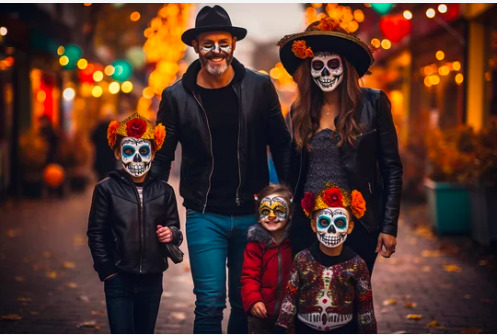
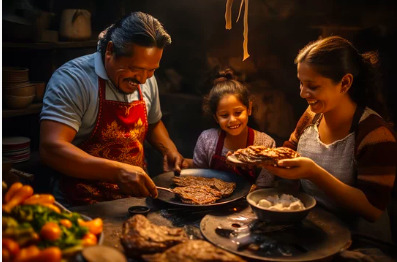
#travel blog#traveling#travel tips#travel#travel photography#travelling#tourism#mexico#day of the dead#dia de los muertos#festival#mexican#festivewear#la catrina#Skeletons#places to visit#skulls#culture#traditions#autumn
24 notes
·
View notes
Text

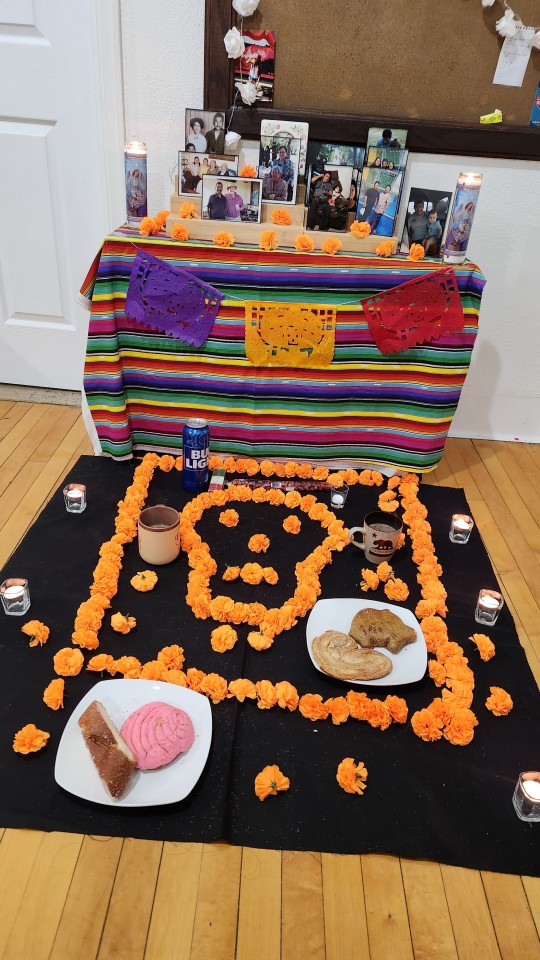

Dia de Los Muertos
This is NOT mexican halloween.
Here, we honor and remember our ancestors. We have offerings for our ancestors on the ofrenda and put their pictures up to remember them. We put things that they liked or enjoyed. Such as pan dulce, candies, foods, or even cerveza, (beer).
The Zempoalxóchitl, (marigolds) flowers represent the sun and the beautiful road it's creates between here and Mictlán (the underworld).
Papel picado, or punched paper, represents the wind, but also decorates the ofrenda and helps make it beautiful for our ancestors.
Candles, represent fire, and light the way for our loved ones.
Water, represents the source of all life. We offer this to our loved ones to quench their thirst from a long journey to visit us.
Ofrendas will be different from family to family and no ofrenda will be the same. There really is no step by step process to make an ofrenda, rather think of the spirirts that will be visiting your house and what you would offer them after such a long journey. How would you want them to feel welcome.
At the same time you want to make sure all spiritual (and, with it, historical) parts of this belief are respected.
Understand that although this is part of a big festivity, most people are mourning loved ones and having an ofrenda is part of the painful process of mourning.
Thank you for letting me share my culture. ❤️
#personal#mine#dia de los muertos#ofrenda#mexican#my ancestors#mexica#azteca#pan dulce#champurrado#Calaveras#catrin#catrina#chicano#latina#latino#Zempoalxóchitl#marigolds#flowers#muertos#papel picado#pan muerto#mexico#Mictlán
18 notes
·
View notes
Text


why not some Mexican culture like "el dia de Muertos" November please hurry up!!
#catrina#mexican#digital art#art#my art#artwork#drawing#illustrators on tumblr#artists on tumblr#illustration#procreate#art commisions#comission#art community#handcrafted#traditional art#ilustración#digital artist#digital painting#cross stitch#digital illustration#dick grayson#art comms open#commissions open#dms open#open commissions#comissions open#follow#crafts#skull art
3 notes
·
View notes
Text



2 notes
·
View notes
Text

Dia De Los Muertos Skeletons Dancing T-Shirt
#dia#de#los#muertos#skeletons#dancing#t-shirt#shirt#celebrate#stunning#day#dead#aesthetic#perfect#adding#touch#mexican#tradition#party#decor#unique#la#catrina#costume#floral-inspired#artwork#ideal#halloween#souls#floral
3 notes
·
View notes
Text

Feliz Dia de los Muertos!
Dressing up for Dia de los Muertos is a popular tradition in the USA and Mexico. People of all ages and genders wear skeletal makeup with flower crowns or other headdresses along with traditional Mexican clothing or clothing inspired by Pre Columbian cultures at Dia de los Muertos festivals. This is a way of honouring ancestors and celebrating Mexican culture. If the outfits are worn with the correct intentions of celebrating Dia de los Muertos and with an understanding of the cultural significance of the costumes and makeup, it is a tradition anyone can take part in.
My digital self portrait shows me dressed as the character La Calavera Catrina. La Calavera Catrina is the iconic skeleton lady of Dia de los Muertos created by Mexican artist Jose Guadalupe Posada in 1910. This is a photo of me with a digital skull makeup filter in front of an ofrenda image created with AI art. The flower crowns and other sparkling details were created using Picmix GIF maker.
I wish everyone celebrating today a safe, joyful, and contemplative Dia de los Muertos!
#DiaDeLosMuertos
#dia de los muertos#la catrina#calavera#jose guadalupe posada#ofrenda#flower crown#skull makeup#digital art#picmix#ai artwork#mexican culture#animated gif#self portrait
12 notes
·
View notes
